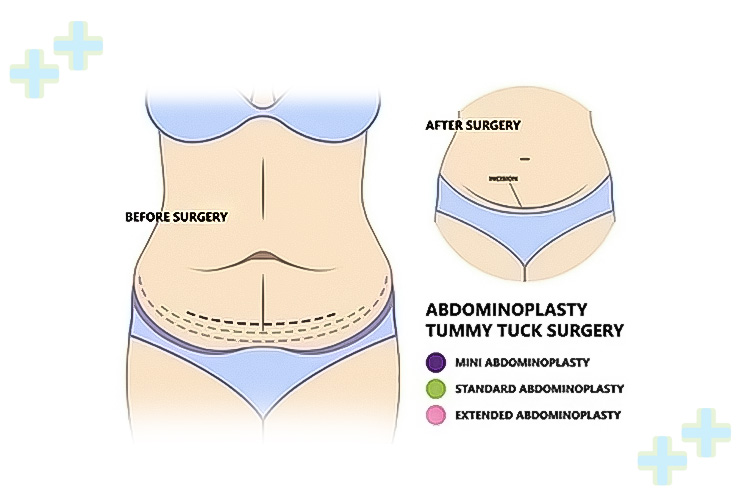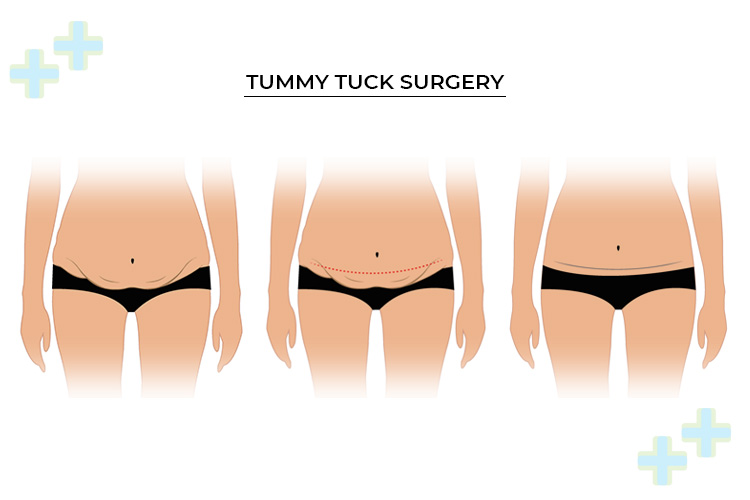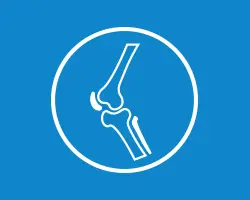Don’t Get Stuck with Bulk, Go for Tummy Tuck!
What Is Tummy Tuck?
A tummy tuck, also known as abdominoplasty, happens to be a cosmetic procedure that involves the removal of excess fat and skin from the midsection, tightens the abdominal wall, and brings the waistline down to a more attractive size. It is a major surgical procedure often used as a last resort to improve the appearance of the abdomen after a person has unsuccessfully tried diet and exercise. It can also be used to help restore the abdominal area after a major weight loss. This surgical procedure helps in reshaping & tightening of the abdomen. It can help to reduce excess fat, skin, and muscle in the abdomen area and improve the contours and appearance of the stomach. In some cases, it can also help to reduce the appearance of stretch marks.

Why Is Tummy Tuck Done?
- Allogeneic stem cell transplant (from the patient)
- Autologous stem cell transplant (from the donor)
What Are the Risks of Tummy Tuck?
Like any surgical procedure, tummy tuck comes with risks. These include the following:
- Infection
- Bleeding
- Discomfort
- Excessive scarring
- Nerve damage
- Reaction to anaesthesia
- Blood clots
How to Prepare for Tummy Tuck?
It is important to have a realistic expectation of the results and understand that the healing process can take time. While preparing for tummy tuck surgery, you should follow all your surgeon’s instructions and avoid taking certain medications in the weeks leading up to the procedure. You should also ensure you’re in good physical health, as this can help to reduce the risks associated with the surgery. To prepare for a tummy tuck, the patient should choose a board-certified plastic surgeon and discuss the procedure with them. To minimize the risk of complications, all necessary tests should be completed before surgery to identify any potential issues.
What to Expect before Tummy Tuck?
Before your procedure, you will likely have to make several appointments with your doctor. During these, you’ll have the opportunity to discuss expectations, lifestyle changes, and other concerns. During these consultations, your surgeon will explain the risks & benefits, and you should have the chance to ask any questions. Your surgeon may also take pictures and measurements to help them plan the procedure. You may also be required to get clearance from your primary care doctor. Patients should also stop smoking and drinking alcohol for at least two weeks prior to the surgery and discontinue any medications or supplements that may interfere with the operation or recovery.

What to Expect during Tummy Tuck?
During a tummy tuck, the patient typically receives general anaesthesia or IV sedation. The plastic surgeon will make a horizontal incision above the pubic area & below the bikini line, then lift and reshape the abdominal skin and muscles. They will then remove any excess fat, skin, and then use sutures to close the incision, secure the muscles and reposition the skin.
What to Expect after Tummy Tuck
After a tummy tuck, you can expect to experience some pain and discomfort.
After the procedure, the patient can expect swelling, bruising, and discomfort, which can be managed with cold compresses, ice packs, and over-the-counter pain medications. Bandages and compression garments will be required to reduce swelling and help support the new contours of the abdomen.
Travel with Trawell for the Best Tummy Tuck Procedure
Though there are risks associated with any surgery, tummy tuck can be a highly effective and satisfying procedure for the right patient. A board-certified plastic surgeon can help you evaluate your candidacy and devise a plan that fits within your goals. Know your options by contacting Trawell and have a happy shaping!
OUR SERVICES

Cosmetic Surgery

Spine Surgery

Organ Transplant

Orthopedic Surgery

Gynecology Infertility

Ophthalmology

Neurosurgery
Cardiology
YOUR GATEWAY TO HEALTH

